
Tech & Sci
15:18, 06-Dec-2017
Tech It Out: How flexible can this futuristic screen be?
By Yang Zhao
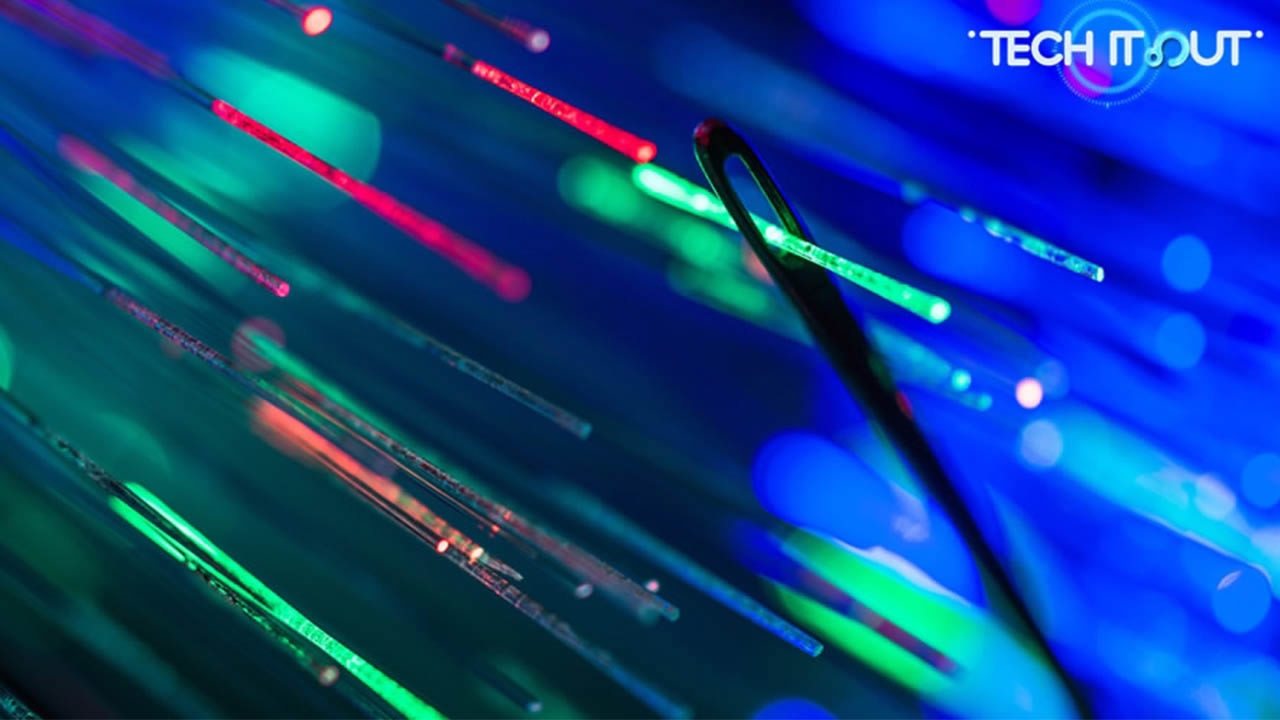
Display technology has been revolutionized in the past few decades. Images are sharper, and colors look clearer. Despite these improvements, displays are essentially the same as they were decades ago: They’re flat, rigid pieces of glass.
Boring, isn’t it?
Recently we have got more choices. You probably own a mobile phone or even TV with a curved display, but what’s more exciting is bendable screen. This year, Chinese display manufacture BOE has announced to start mass production of flexible AMOLED screens in Sichuan Province. They will rival Samsung in this market.
See, flexible screens are next big thing. Then question is, how flexible can we get in the future?
I met Professor Peng Huisheng from Fudan University, and he believes your T-shirt might be your next screen.
But this dream will be realized step-by-step.
First, they have developed a piece of silica gel that can glow under control. The gel is so soft that can be rolled up, scrunched around and even folded flat. This could be used as a basic unit for a flexible screen, replacing the rigid light-emitting units that are currently used.
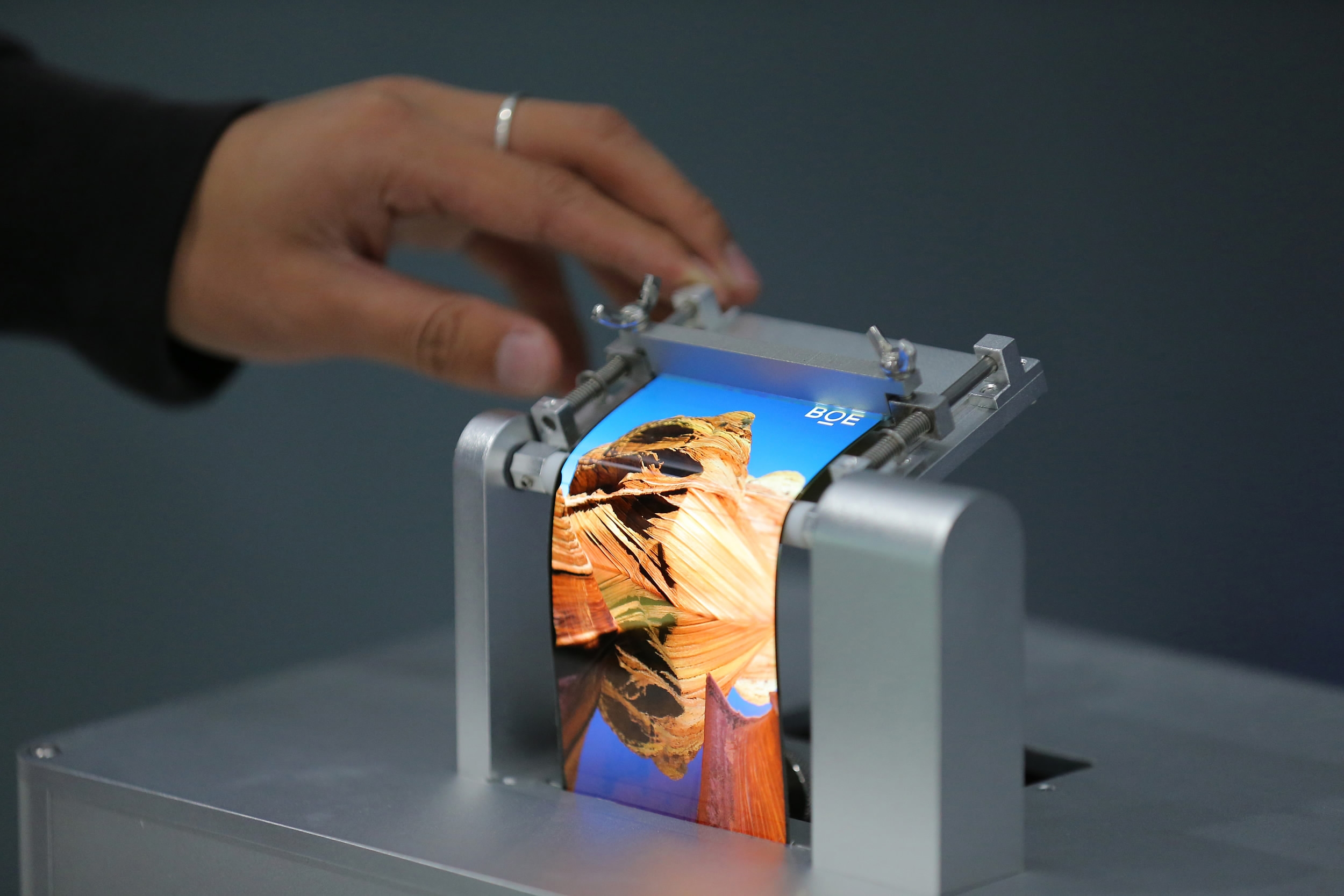
Flexible
AMOLED screens made by BOE can be rolled up but cannot fold flat. /CGTN Photo
Flexible AMOLED screens made by BOE can be rolled up but cannot fold flat. /CGTN Photo
How did they make it? Of course they wouldn't share the precise details, but they said they put luminescent powder directly into soft silicone to make it glow, and sandwiched the silica gel with two layers of electrodes. The light-emitting active material in the silicone gel will be excited by the electricity, making it glow. The structure is little bit like the dielectric elastomer we mentioned in the last episode of Tech It Out.
“Of course traditional LCD can still be made to bend by utilizing flexible material to make its substrate and components, that’s an idea applied in a new concept called OLED, but will eventually lead to a very high cost,” said Zhang Ye, researcher at Professor Peng’s team.
But the scientists won’t be satisfied here. They want a future display that is not just bendable but wearable. Based on the planar structure of the light-emitting silica gel, they made electro-luminescent fiber, or ELF. They have made the gel into a fiber shape, and the two electrodes from thin layers into the inner cores of the fiber. When an electric current is applied to the cores, the fiber glows and luminescent fiber is obtained.
Scientists iare trying to interweave a display with this kind of fiber. It may not be difficult to see a display embroidered in one’s clothing in the future, because cloth shares same structure with the display, which is made up of millions of tiny blocks called pixels. Each one is red, green or blue, and can be switched on and off rapidly to make a moving color picture.
Cloth is similar. Look close enough and you’ll see the individual fibers woven together to make textiles. Each intersection between two threads can be imagined as a pixel.
“If we can precisely control the light emission of each intersection through software, we can turn your T-shirt into a display, That’s what we are doing right now,” said Professor Peng.
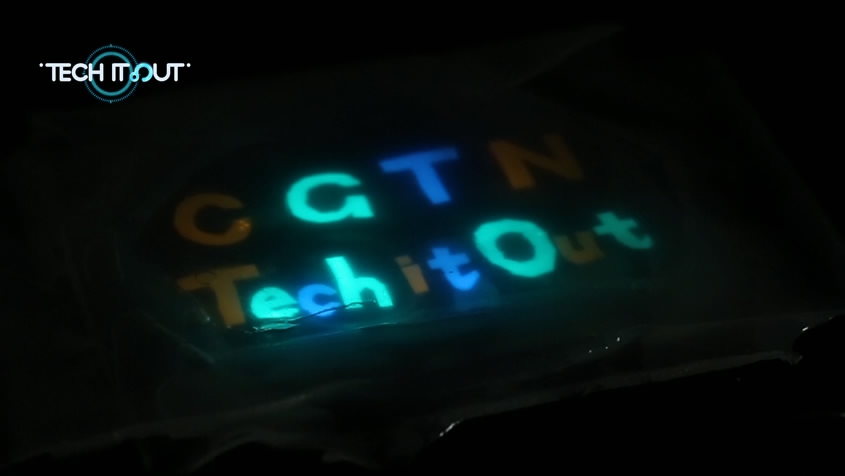
Light-emitting silica gel can replace traditional rigid display units. /CGTN Photo
Light-emitting silica gel can replace traditional rigid display units. /CGTN Photo
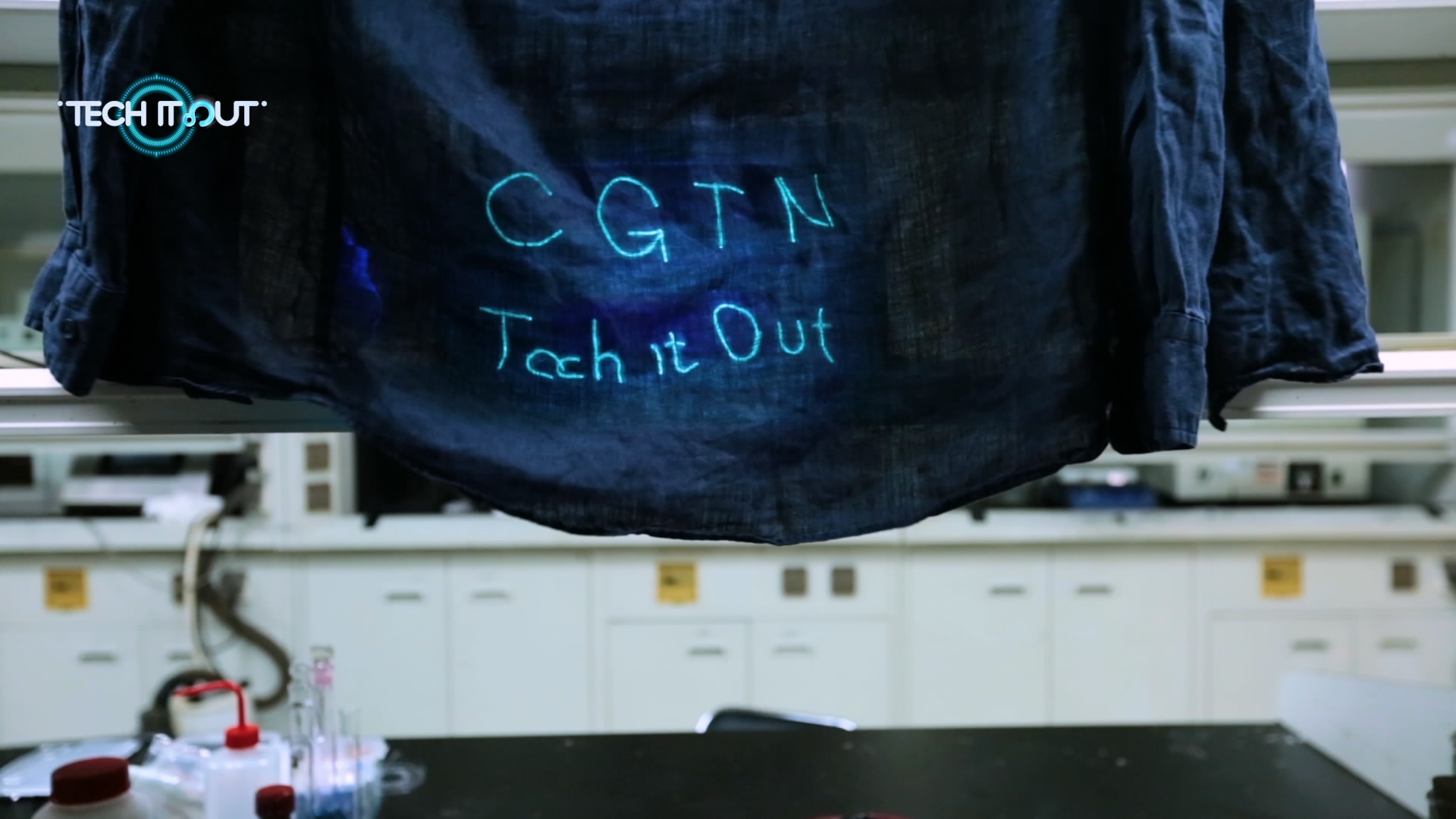
Luminescent fiber can be seen as an updated version of light-emitting silica gel. /CGTN Photo
Luminescent fiber can be seen as an updated version of light-emitting silica gel. /CGTN Photo
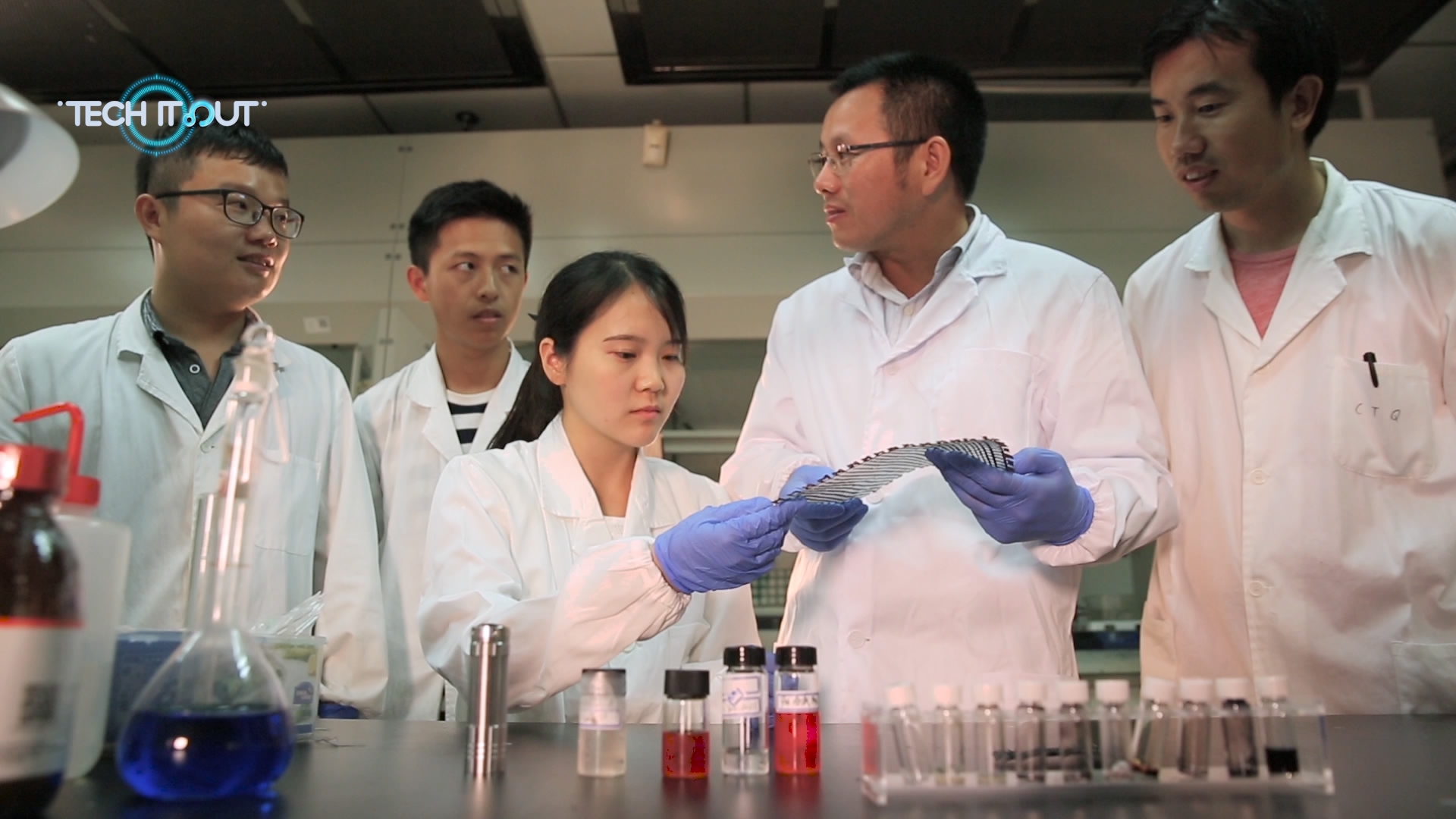
Professor Peng and his team working in the lab. /CGTN
Professor Peng and his team working in the lab. /CGTN
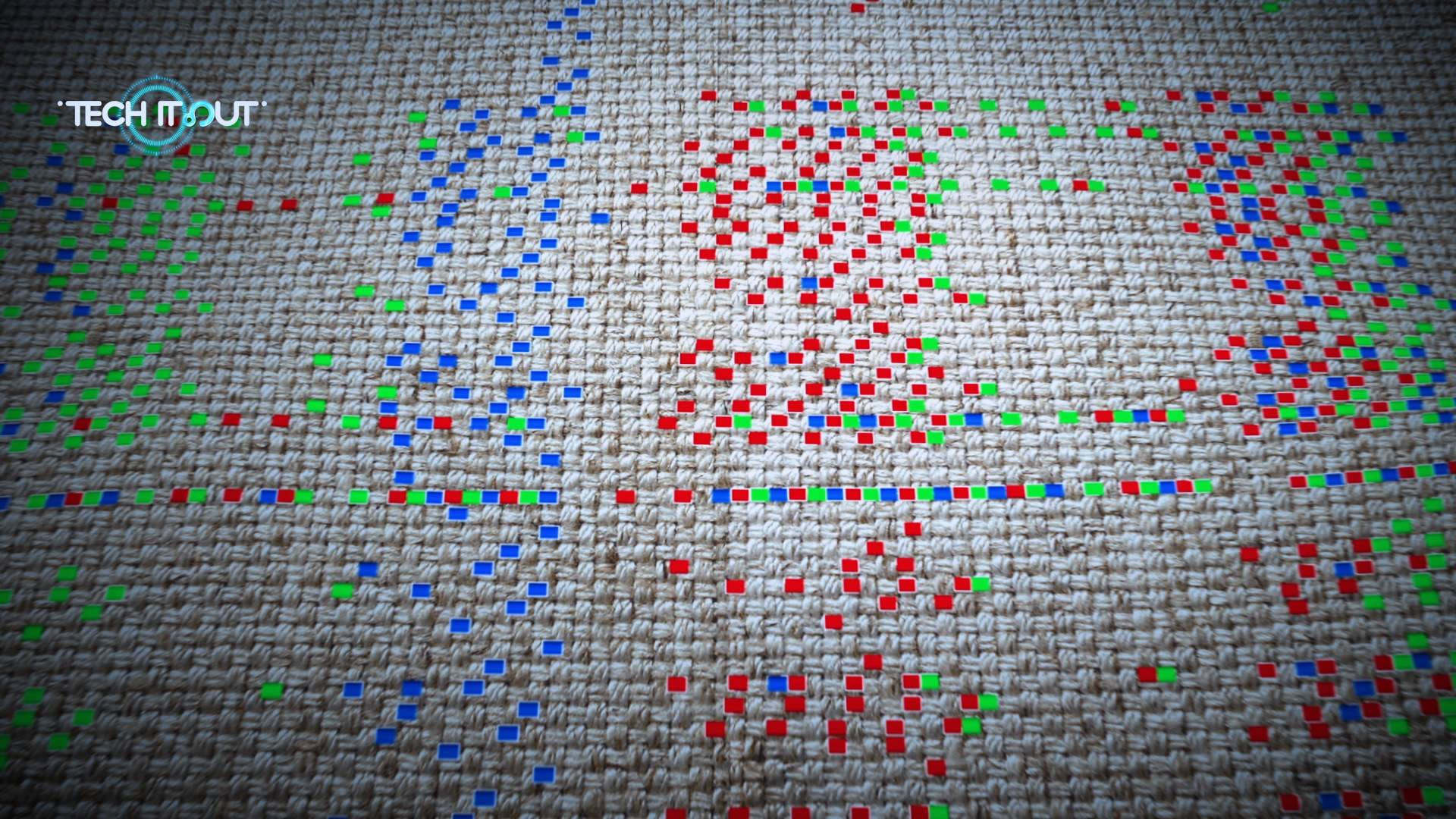
Each intersection between two threads on a cloth can be imagined as a pixel. /CGTN Photo
Each intersection between two threads on a cloth can be imagined as a pixel. /CGTN Photo

SITEMAP
Copyright © 2018 CGTN. Beijing ICP prepared NO.16065310-3
Copyright © 2018 CGTN. Beijing ICP prepared NO.16065310-3